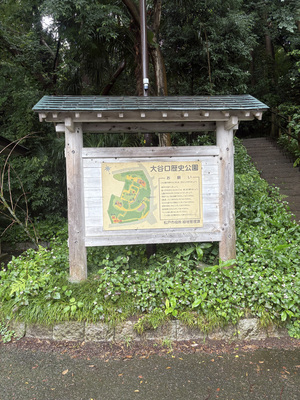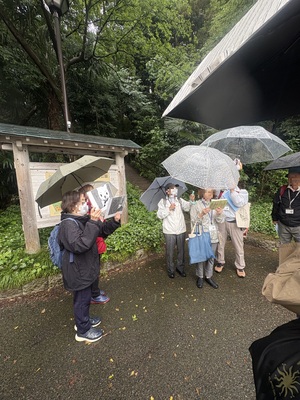Lan, tell us about your cultural experiences! June 2025 Issue
更新日:2025年6月15日
A stroll around Kita-Kogane Station: Exploring the Kogane Castle Ruins and Historic Temples.
The other day, I joined a walking tour titled “Exploring the Kogane Castle Ruins Through Folktakes”. This tour, organized by the Matsudo City Guides, a group of volunteer guides from Matsudo City, offers participants a chance to learn about the area’s history and culture while enjoying local folktales.
Before the tour, my knowledge of the Kita-Kogane area was limited to just a couple of landmarks: Hondo-ji Temple, famously known as the “Hydrangea Temple”, and the quietly elegant Tozen-ji Temple. However, through this experience, I discovered for the first time that the area is home to many temples with deep historical significance.
One of the highlights of the tour was the Kogane Castle Ruins. Believed to have been built during the Sengoku (Warring States) period (the 15th -16th centuries), the site is now known as Oyaguchi Historical Park, where remnants of the castle’s earthworks and moats can still be seen. A particularly memorable moment was hearing the local folktale of “Kogane-maru, the Loyal Dog”, share by our guides. According to the tale, Kogane-maru sacrificed his life to protect his master, the lord of Kogane Castle (of the Takagi clan), from a giant serpent. The story was both fascinating and touching, helping me to feel a deeper connection to the local history.

Oyaguchi Historical Park

Matsudo City Guides are telling folktales
In my home country of Vietnam, Buddhism is the major religion, and the temples can be found in every town. Vietnamese people often visit temples on the 1st and the 15th days of the lunar calendar. However, there are some differences between Japanese and Vietnamese temples. For instance, while Japanese temples often have graveyards on their grounds, in Vietnam, although funeral ceremonies may take place at the temples, actual burials typically occur in designated graveyards or near the family home.
Visiting Japanese temples with an awareness of these cultural differences allows me to appreciate more deeply the unique histories and community ties that each temple holds. Walking through the Kita-Kogane area gave me a chance to connect with the “fragments of history” embedded in everyday life, and it was truly valuable experience.
北小金駅周辺を歩く - 小金城跡と歴史あるお寺めぐり
先日、私は「昔話でめぐる小金城跡」というまち歩きツアーに参加しました。これは松戸市の観光ボランティアガイド団体「松戸シティガイド」の皆さんが実施しているガイドツアーで、北小金駅周辺の歴史や文化に昔話を交えながら触れることができます。
北小金といえば、「紫陽花寺」として有名な本土寺や、静かな佇まいの東禅寺くらいしか知らなかった私ですが、ツアーに参加して初めて、この地域には歴史あるお寺が数多く残されていることを知りました。
なかでも印象的だったのが、小金城跡です。戦国時代(15世紀末~16世紀末)に築かれたとされるこの城跡は、現在は大谷口歴史公園になっており、土塁や堀などの跡がまだ残っています。ガイドの方が語る、小金城の城主(高城氏)が飼っていた犬が自らの命を犠牲にして、城主を大蛇から守った「忠犬小金丸」という昔話は非常に面白くて、地元の歴史を身近に感じさせてくれるものでした。

大谷口歴史公園

昔話を語っているガイドたち
私の母国ベトナムでは、仏教が主要な宗教で、お寺は町のあちこちにあり、旧暦の毎月1日と15日には多くの人が参拝に訪れます。ただ、日本とベトナムのお寺にはいくつかの違いがあります。たとえば、日本のお寺にはお墓が併設されていることが多いですが、ベトナムでは葬儀がお寺で行われることはあっても、基本的に埋葬は指定の霊園や自宅周辺で行われます。
こうした文化の違いを意識しながら日本のお寺を訪れると、それぞれのお寺が持つ歴史や地域とのつながりがいっそう深く感じられます。北小金のまち歩きを通じて、日常の中にある「歴史のかけら」に触れることができ、とても貴重な体験となりました。
Click to see the full catalogue of Lan's columns コラムの一覧へ


